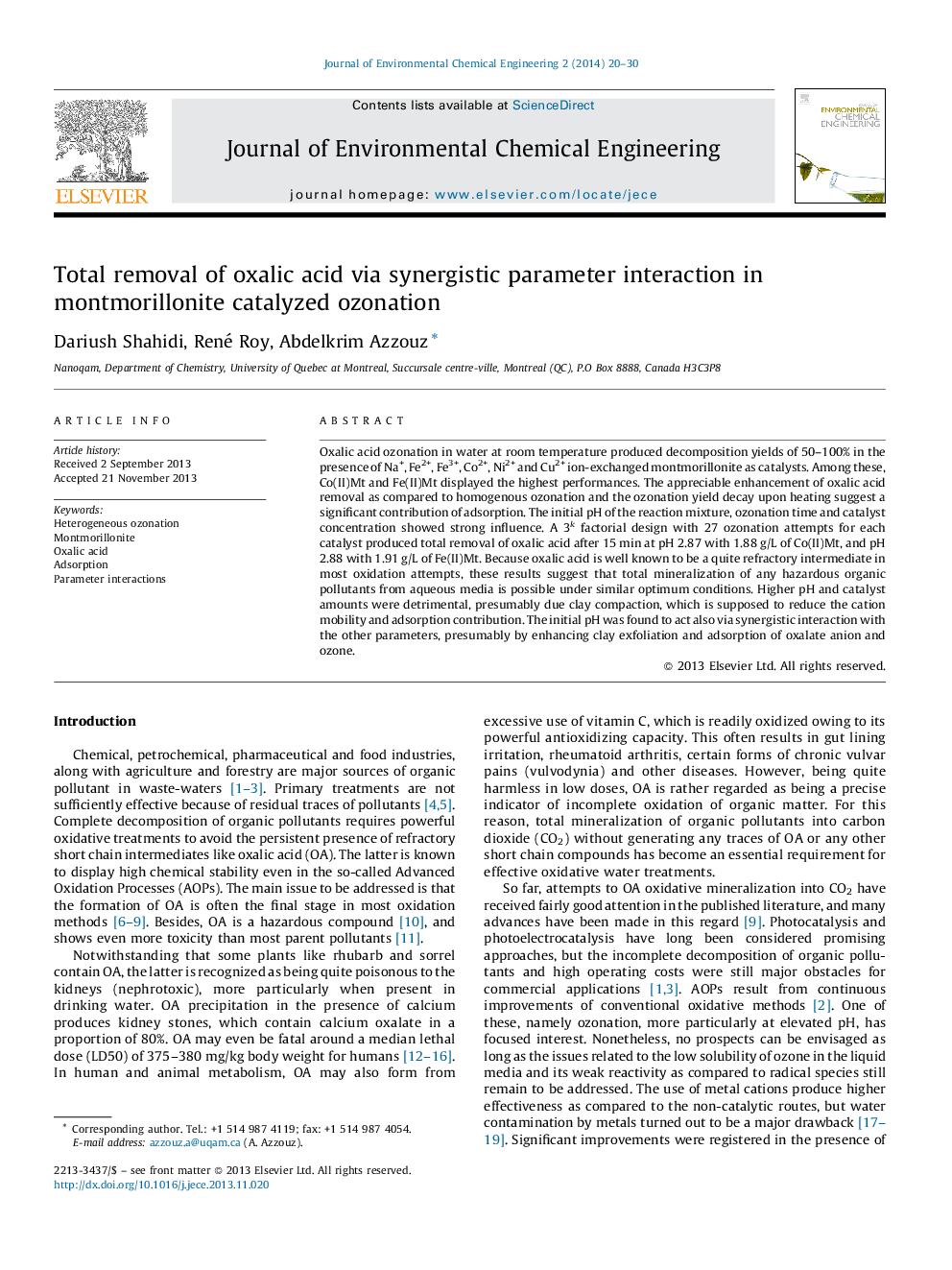| Article ID | Journal | Published Year | Pages | File Type |
|---|---|---|---|---|
| 222115 | Journal of Environmental Chemical Engineering | 2014 | 11 Pages |
•Total degradation of oxalic acid is possible by montmorillonite-catalyzed ozonation.•The favorable effect of montmorillonite is due to the contribution of adsorption.•Fe(II) and Co(II) ion-exchanged montmorillonites are the most active catalysts.•Optimum initial pH and catalyst amount produced favorable synergistic interaction.•Similar optimum conditions can completely decompose any organic pollutant.
Oxalic acid ozonation in water at room temperature produced decomposition yields of 50–100% in the presence of Na+, Fe2+, Fe3+, Co2+, Ni2+ and Cu2+ ion-exchanged montmorillonite as catalysts. Among these, Co(II)Mt and Fe(II)Mt displayed the highest performances. The appreciable enhancement of oxalic acid removal as compared to homogenous ozonation and the ozonation yield decay upon heating suggest a significant contribution of adsorption. The initial pH of the reaction mixture, ozonation time and catalyst concentration showed strong influence. A 3k factorial design with 27 ozonation attempts for each catalyst produced total removal of oxalic acid after 15 min at pH 2.87 with 1.88 g/L of Co(II)Mt, and pH 2.88 with 1.91 g/L of Fe(II)Mt. Because oxalic acid is well known to be a quite refractory intermediate in most oxidation attempts, these results suggest that total mineralization of any hazardous organic pollutants from aqueous media is possible under similar optimum conditions. Higher pH and catalyst amounts were detrimental, presumably due clay compaction, which is supposed to reduce the cation mobility and adsorption contribution. The initial pH was found to act also via synergistic interaction with the other parameters, presumably by enhancing clay exfoliation and adsorption of oxalate anion and ozone.
Graphical abstractFigure optionsDownload full-size imageDownload as PowerPoint slide
